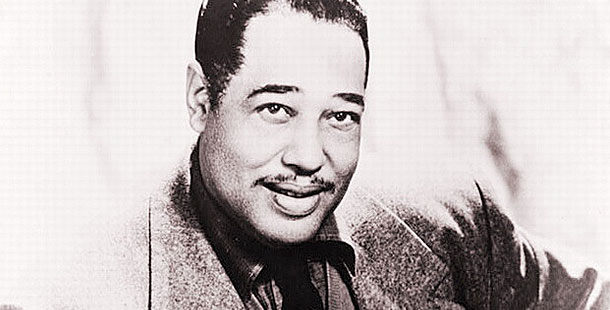Duke Ellington, a prominent figure in music and cultural history, especially in jazz, died fifty years ago on May 24, 1974.
Edward Kennedy Ellington was born into a lower middle-class family in Washington on April 29, 1899. His mother was the daughter of a former slave. Ellington’s childhood was marked by pervasive racism, including the unrest of the ‘Red Summer’ of 1919, three months of bloody violence. As a Black man, Ellington also had to assert himself in a hostile and discriminatory industry. These early experiences of racism and discrimination naturally impacted on his music.
The 1920s were a time of artistic and cultural flourishing for Black Americans, particularly in Harlem. This Harlem Renaissance emerged in an era of intense racist oppression and social inequality and addressed the issues facing the African American community with an attempt to promote alternative forms of identity and solidarity.
In 1923, Duke Ellington founded an ensemble with his childhood friend, drummer Sonny Greer. Over the years, the ensemble grew into a fully fledged jazz orchestra, gaining high fame. Originally emerging as a form of African American folk music (blues, work songs, and spirituals), the term ‘jazz’ first appeared in the early years of the 20th century and was initially used in connection with music originating in the Southern United States. Thus, Ellington made a relatively new, specifically Black musical genre his form of expression. Some of the most famous musicians who joined Ellington’s orchestra under his leadership included some of the most talented jazz musicians of the time, including saxophonist Johnny Hodges, trumpeter Bubber Miley, and clarinetist Barney Bigard. They performed in Harlem clubs and later in the legendary Cotton Club, when it only allowed Black artists and staff, but no Black audience.
Ellington’s “Black and Tan Fantasy” was openly socially critical: a Black dancer dances herself to death due to love and financial hardship. The music included elements of blues, jazz, sacred, and classical European music (Chopin’s Funeral March). This remarkable composition was a direct challenge to the derogatory stereotypes associated with the then-called ‘jungle music.’ Its syncopated rhythms, improvisations, and the use of brass instruments played on this, elevating this sound to a very sophisticated level.
Ellington’s class consciousness, particularly regarding the Black working class, was often subtly woven into his compositions. Compositions such as “Harlem Air Shaft” (1940) are excellent examples of his ability to depict life in urban Black communities. In “Harlem Air Shaft,” Ellington musically portrays the cramped living conditions and lively atmosphere of a Harlem apartment building. The title refers to the airshafts in Harlem apartment buildings, capturing the atmosphere of bustling streets, crowded tenements, and pulsating energy. Ellington uses music to paint a sound portrait of everyday life in this neighbourhood, incorporating elements of swing, blues, and improvisation to evoke the landmarks and sounds of Harlem.
As the civil rights movement gained momentum in the 1950s and advocated for racial equality through direct action, such as mass protests, boycotts, and sit-ins, Ellington was sometimes criticised for his more restrained approach. While Ellington’s earlier stand primarily consisted of using a specifically Black genre and imbuing this with artistry and dignity, as well as organising benefit concerts, his approach evolved over time. By 1961, Ellington had included non-segregation clauses in his contracts and refused to perform before segregated audiences.
In the 1960s and 1970s, Ellington acted as a ‘jazz ambassador’ on behalf of the U.S. Department of State. During those years, he also traveled to socialist countries, including a five-week tour of the USSR in 1971.
BLACK, BROWN, AND BEIGE
During the 1930s, the idea of a large-scale composition about the experience of racism in the United States emerged. The premiere of Black, Brown, and Beige: A Tone Parallel to the History of the American Negro took place in 1943 at Carnegie Hall as part of a benefit event for Russian War Relief. The three-movement composition addressed three specific epochs of Africans after their enslavement in North America: slavery, their involvement in wars, and the contemporary period, with a focus on “Harlem and all the little Harlems in the U.S.” The first section, “Black,” addresses the connection between work songs and spirituals, connecting sacred music and field music, with spirituals referring to a church that slaves had no access to.
The second section, “Brown,” honours the contribution of Blacks in various liberation wars. The first of three dances, the “West Indian Dance,” celebrates the heroic deeds of the seven hundred free Haitians who came to the aid of the Americans during the Siege of Savannah (1779). It then moves on to the Civil War and finally to a lighter mood in “Emancipation Celebration,” referring to the Emancipation Proclamation issued by Abraham Lincoln on January 1, 1863, which declared that all slaves in Confederate-controlled territory should be freed. Dealing with the Spanish-American War, the returning heroes continued to be denied basic rights. This section had its parallels with the “Double V” campaign of World War II.
The final “Beige” movement criticises contemporary racism, musically suggesting that there were “more churches than cabarets” in Harlem and that Blacks were educated and cultivated.
Each movement of Black, Brown, and Beige uses Ellington’s jazz idiom in characteristic ways to depict the harsh lives of Blacks who contributed significantly to building American society.
Ellington’s commitment to liberation was primarily evident in his music. Through his diverse musical repertoire, he demanded the same level of recognition and respect that was accorded to white composers. Ellington’s influence is immeasurable, not only on US music and culture but also on the global stage. He undoubtedly ranks among the great musicians of the twentieth century.






